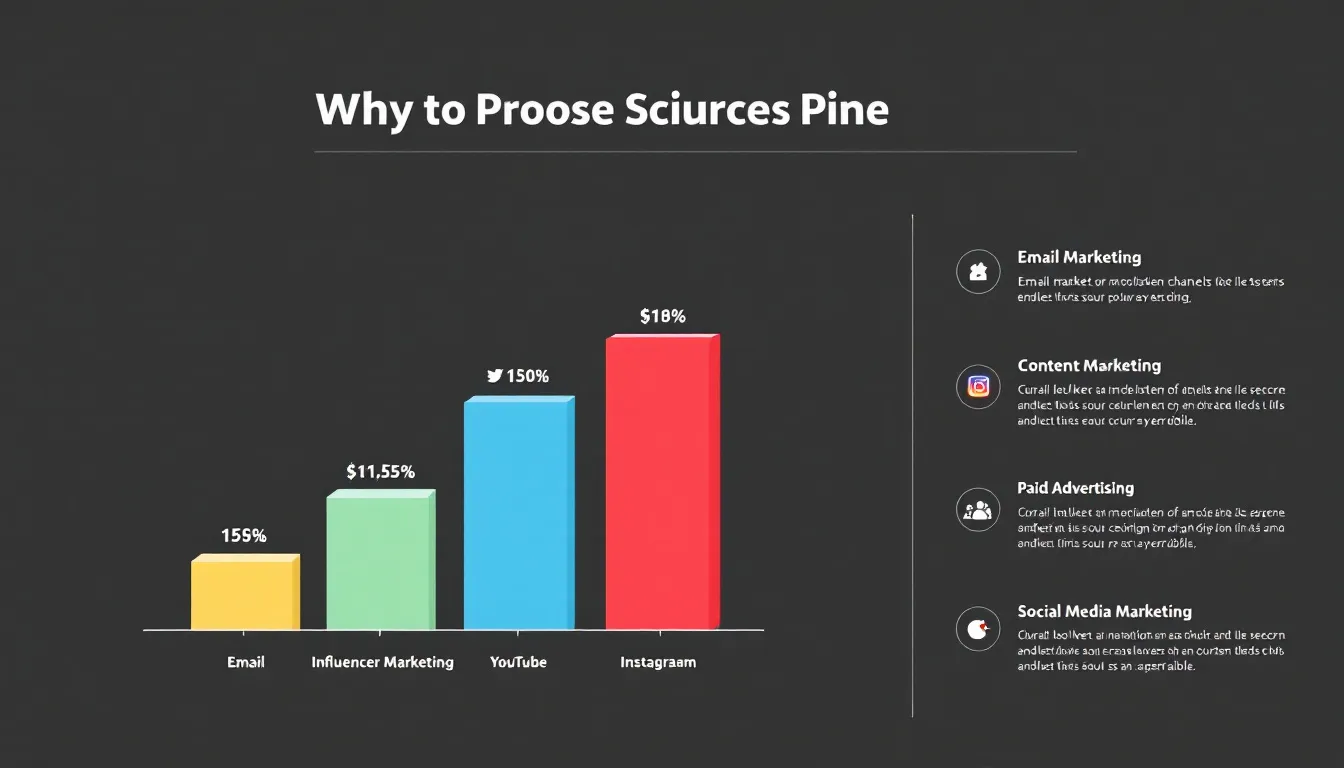Looking to master your strategy on marketing for 2025? This guide provides all the essential steps to create a successful marketing plan. Learn about key components, setting clear goals, and effective market research.
Key Takeaways
A comprehensive marketing strategy encompasses understanding the target audience, defining a clear value proposition, and establishing specific marketing goals using the SMART method.
Conducting thorough market research and developing detailed buyer personas are essential for effective targeting and aligning marketing tactics with customer needs.
Measuring success through key performance indicators (KPIs) and adapting to market trends are crucial for refining marketing strategies and ensuring alignment with overall business objectives.
What is a Marketing Strategy?

A marketing strategy is more than just a plan; it is the blueprint that marketing strategy outlines how a business intends to achieve its marketing goals and engage its customers. It encompasses the overall marketing strategy value proposition, detailing specific activities and marketing tactic that will be employed over time to reach prospective consumers and convert them into loyal customers through strategic marketing.
An effective marketing strategy serves as a guiding light for a business’s marketing efforts. It provides clarity on how to reach and engage the target audience, influencing product features, pricing, and packaging based on customer needs. With a documented successful marketing strategies, businesses are 313% more likely to be successful, enhancing customer experience and increasing ecommerce effectiveness.
A successful marketing strategy fundamentally consists of the four Ps. These are product, price, place, and promotion. Establishing strong brand positioning is also crucial as it creates a sustainable competitive advantage. Identifying clear marketing objectives, understanding the target audience, and outlining specific marketing tactics enable businesses to build a robust strategy that lays the groundwork for success.
Key Components of a Successful Marketing Strategy

Creating a successful marketing strategy involves several key components that work together to achieve the desired outcomes. Understanding your target audience is paramount, as it helps clarify which marketing strategies to employ and how to position your products effectively. Demographics, interests, and behaviors are crucial parameters in defining this audience.
A well-defined value proposition is another critical component, as it addresses customer needs and differentiates your brand from competitors.
The marketing mix, consisting of the four Ps:
Product
Price
Promotion
Place
should be aligned to effectively tackle customer pain points.
Additionally, ‘People’ is an essential fifth P that should not be overlooked in your marketing efforts.
Analyzing market research data helps identify trends and patterns, informing strategic decisions rather than confirming initial assumptions. A complete marketing strategy consists of several critical components. These include brand objectives, target audience personas, marketing channels, and key performance indicators. Together, these elements form a cohesive strategy that drives business growth and customer engagement.
Setting Clear Marketing Goals
Setting clear marketing goals is the cornerstone of any successful marketing strategy. Employing the SMART Goals method—specific, measurable, achievable, relevant, and time-bound objectives—enhances team unity and clarifies shared marketing objectives. This method not only improves task prioritization but also increases productivity within marketing teams.
Goals and objectives must be articulated clearly to ensure everyone understands the larger purpose behind their marketing efforts. Goals are broader statements that reflect the overall business objectives, while objectives are specific actions designed to achieve those goals. Smaller, measurable goals within the strategy provide benchmarks for progress and help in tracking success.
Whether it’s increasing traffic, generating leads, boosting sales, or improving brand awareness, having well-defined goals aligns your marketing strategy with your business’s vision. This alignment ensures that every marketing effort contributes to the overarching business objectives, creating a cohesive and effective marketing plan.
Conducting Market Research

Market research is the backbone of any robust marketing strategy, providing valuable insights into the industry and customers. It helps identify important consumer needs and differentiates your products or services from competitors. Effective market research methods include surveys and interviews, which offer a deeper understanding of your audience.
Creating a marketing research plan involves selecting appropriate methods to gather information relevant to the identified problem. Data collected can be both quantitative, including numerical information, and qualitative, encompassing descriptive insights. This comprehensive approach ensures that you have a well-rounded understanding of the market landscape.
Businesses can conduct research themselves or hire external agencies to gather market insights. Collecting accurate customer data is crucial for identifying the target audience and understanding market trends. Customer feedback through surveys and social media monitoring further helps businesses understand customer sentiment and improve their services.
Developing Buyer Personas
Developing detailed buyer personas is essential for targeting your marketing efforts effectively. Buyer personas are snapshots of your ideal customers, including demographic and psychographic information. They should be at the core of your strategy, guiding every marketing decision.
In a B2B context, buyer personas should also address roles such as decision-maker, financial buyer, and technical advisor. This structured approach to identifying the target audience through market segmentation enhances the effectiveness of your value proposition. Understanding your audience’s needs and pain points is fundamental for effective channel selection.
An example of a buyer persona could be Budgeting Belinda, a stylish working-class woman in her 30s who seeks designer deals at low prices. By developing such detailed personas, you can tailor your marketing efforts to resonate more deeply with your potential customers, increasing engagement and conversion rates.
Crafting Your Value Proposition
A strong value proposition is the heart of any marketing strategy, communicating the unique value your product or service offers. It addresses customer needs and differentiates your brand from competitors. The unique selling proposition (USP) highlights what makes your offering distinct and serves as a critical component of an effective value proposition.
Clear, concise messaging is crucial for crafting a value proposition that resonates with potential customers. Testing different versions through surveys or metrics can help refine the message for better alignment with customer preferences. A strong call to action at the end of your value proposition can significantly drive customer engagement and conversions.
Incorporating social proof, such as testimonials, adds credibility and enhances the persuasive power of your value proposition. In 2025, hyper-personalization driven by AI will define consumer expectations, requiring brands to deliver tailored experiences. Differentiating your solution by showing how it’s the best option compared to competitors is key to standing out in a crowded market.
Selecting the Right Marketing Channels

Selecting the right marketing channels is crucial for reaching your target audience effectively. The primary goal is to align channel choices with your target persona’s media consumption habits. Factors such as customer demographics, trust, media consumption, and budget influence the selection of marketing channels.
A multi-channel strategy is advisable to enhance marketing effectiveness. This approach allows you to reach a broader audience and reduces the risks associated with over-reliance on a single channel. Consider both traditional and digital channels, as each has its own strengths and can complement each other.
It’s important to note that certain industries have regulations that can restrict marketing practices on specific channels. Additionally, some marketing channels require more effort and management than others, so it’s essential to assess your available resources before making a decision.
The integration of social media platforms as direct sales channels is also transforming how brands engage their audiences and drive purchases.
Creating Engaging Content
Creating engaging content is a cornerstone of any successful marketing strategy. Content marketing plays a crucial role in demonstrating brand authority and trustworthiness by delivering valuable, well-targeted content to the audience. Utilizing diverse content types, such as videos, blogs, and infographics, attracts broader audience engagement.
Innovative and creative approaches to content can capture the audience’s attention more effectively. Using credible and verifiable information enhances trust and engagement with the audience. Establishing a distinct brand voice helps differentiate your content in a crowded digital space.
Incorporating client feedback can guide content creation towards what is most engaging for your target audience. Understanding your audience’s interests is crucial for creating content that resonates and engages. Engaging content is designed to grab attention and compel readers to continue consuming it.
Implementing Competitive Analysis
Competitive analysis is essential for understanding your market position and identifying potential opportunities for growth. Conducting competitor analysis allows businesses to gauge their position in the market by studying rivals. This process is crucial for differentiating from competitors and achieving measurable results.
Effective competitive analysis requires collaboration with diverse teams to uncover insights beyond individual perspectives. Tools such as SWOT analysis, the Growth Share Matrix, and perceptual mapping help visualize customer perceptions and identify market positioning.
Analyzing competitors can provide insights into effective marketing channels in your industry. Templates for evaluating competitors’ strengths, weaknesses, and strategies can assist in conducting a comprehensive competitive analysis. By understanding the competitive landscape, businesses can develop strategies that leverage their strengths and address market gaps.
Allocating Your Marketing Budget

Allocating your marketing budget is crucial for executing an effective marketing strategy. A well-defined marketing budget encompasses all required expenses, such as salaries, advertising, and software tools. Important factors to consider include advertising costs, influencer collaborations, social media strategies, and press releases.
To get optimum results, it’s essential to align your budget with specific marketing goals and measure the return on investment (ROI). Using historical data is beneficial for setting future budgets and planning marketing strategies effectively. Regularly tracking marketing performance helps determine the effectiveness of spending and allows for timely adjustments.
Investing in multiple channels can minimize risks associated with over-reliance on a single campaign. Collaboration between marketing and sales teams is also essential for effective budget allocation and achieving common goals. By carefully planning and monitoring your budget, you can ensure that your marketing efforts are both efficient and effective.
Measuring Success with KPIs
Measuring success with key performance indicators (KPIs) is essential for evaluating the effectiveness of your marketing strategies. Tracking KPIs allows you to assess how well your marketing efforts are performing and identify areas for improvement. Choosing relevant KPIs depends on factors such as business type and preferred customer acquisition channels.
Different KPIs should be utilized at every stage of the marketing funnel: awareness (website traffic, ad impressions), consideration (time on site, social media engagement), and decision (conversion rate). Regular measurement and review of marketing strategies against KPIs enable marketers to refine their approaches and enhance campaign effectiveness.
Keep track of what is working and adjust marketing strategies as needed after implementation. By continually monitoring and analyzing your KPIs, you can ensure that your marketing efforts are aligned with your business goals and driving the desired results.
Leveraging Digital Marketing Tactics
Leveraging digital marketing tactics is crucial for reaching and engaging your target audience in today’s digital age. Digital marketing encompasses various online techniques to promote brands and connect with audiences. A successful digital marketing strategy combines multiple tactics to achieve specific business goals.
Search engine optimization (SEO) aims to elevate a website’s visibility in search engine results through optimized content and user experience. Pay-per-click (PPC) advertising allows for immediate traffic generation by charging advertisers only per click on their ads. Social media marketing involves creating content that engages users and builds a community around a brand, while search engine marketing focuses on enhancing visibility through paid strategies.
Influencer marketing utilizes the authority of individuals with large followings to promote products, enhancing brand trust. Data-driven tools are becoming essential for businesses aiming to innovate and grow effectively in 2025. By leveraging these digital marketing tactics, businesses can create effective marketing strategies that drive customer engagement and achieve business goals.
Enhancing Customer Loyalty
Enhancing customer loyalty is a critical component of a successful marketing strategy. Studies show that a mere 5% increase in customer retention can enhance profits by 25% to 95%. Building strong emotional connections between brands and customers is vital for driving repeat purchases and creating opportunities for upselling.
Exceptional customer service is crucial for turning new customers into loyal ones. Swift problem resolution fosters trust and encourages customers to stay loyal to your brand. Additionally, loyalty programs can significantly enhance retention, with 80% of participants likely to continue spending with a brand when working towards a reward.
By focusing on customer loyalty, businesses can create a sustainable competitive advantage, ensuring long-term success and profitability. Implementing effective marketing strategies that prioritize customer engagement and satisfaction will help in building a loyal customer base that continues to support and advocate for your brand.
Adapting to Market Trends
Adapting to market trends is essential in today’s rapidly changing business landscape. Brands must continuously adjust their marketing strategies to stay aligned with emerging trends and changing consumer expectations. Static marketing approaches are insufficient in the face of rapid technological advancements and market shifts.
Collaboration between brands is increasingly recognized as a powerful strategy for creating innovative products and unique consumer experiences. By staying updated with market trends and being flexible in your marketing approach, you can ensure that your strategies remain relevant and effective.
Market research plays a crucial role in identifying these trends and understanding how they impact your industry. By conducting thorough market research and being open to change, you can adapt your marketing strategies to stay ahead of the competition and meet the evolving needs of your customers.
Summary
In conclusion, mastering the strategy on marketing is essential for achieving business success in 2025. By understanding what a marketing strategy is and its key components, setting clear marketing goals, conducting thorough market research, developing detailed buyer personas, crafting a compelling value proposition, and selecting the right marketing channels, you can create a robust marketing plan that drives results.
Additionally, creating engaging content, implementing competitive analysis, allocating your marketing budget effectively, measuring success with KPIs, leveraging digital marketing tactics, enhancing customer loyalty, and adapting to market trends are all crucial steps in building a successful marketing strategy. By following these guidelines, you can ensure that your marketing efforts are effective, efficient, and aligned with your business goals.
Frequently Asked Questions
What is a marketing strategy?
A marketing strategy is a comprehensive plan that details how a business will achieve its marketing objectives and connect with its customers. It encompasses the value proposition, target audience, and specific tactics to be utilized.
Why is setting clear marketing goals important?
Setting clear marketing goals is essential as it aligns marketing efforts with business objectives and establishes measurable benchmarks to track progress effectively. This clarity ensures that every marketing action contributes meaningfully to overall success.
How can market research benefit my marketing strategy?
Market research is essential as it offers crucial insights into customer needs and industry trends, enabling you to differentiate your offerings and make informed decisions for your marketing strategy. By leveraging these insights, you can effectively align your strategy with consumer demands.
What are buyer personas, and why are they important?
Buyer personas are comprehensive profiles of your ideal customers that encompass demographic and psychographic insights. They are crucial for tailoring marketing strategies to effectively engage your target audience, ultimately enhancing engagement and boosting conversion rates.
How can I measure the success of my marketing strategies?
Measuring the success of your marketing strategies involves tracking key performance indicators (KPIs) at each stage of the marketing funnel. This approach enables you to evaluate the effectiveness of your efforts and pinpoint areas for enhancement.





